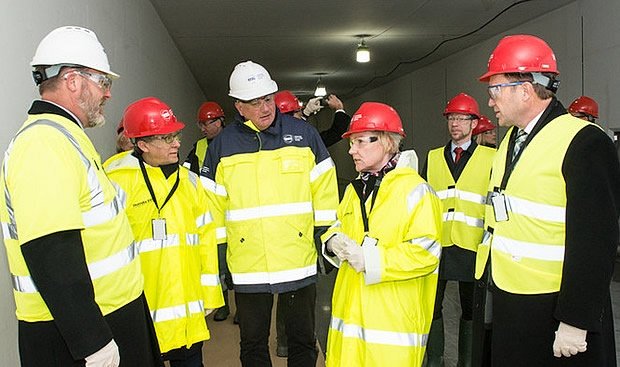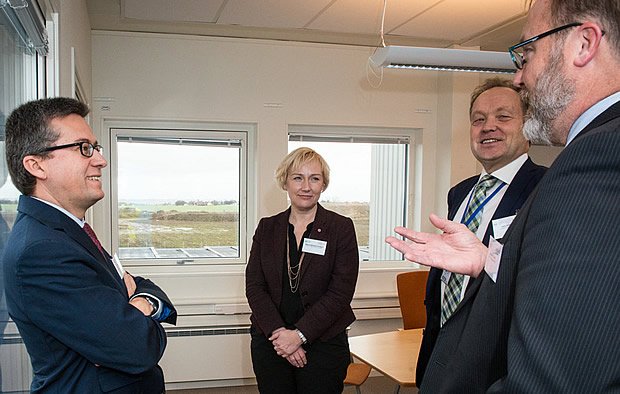Copyright 2012 neutronsources.org | All rights reserved. | Powered by FRM II | Imprint / Privacy Policy
EU Research Commissioner Visits ESS Construction Site
European Research and Innovation. As one of the highest priority research infrastructure projects in Europe, ESS was visited today by the European Commissioner for Research, Science and Innovation, Carlos Moedas. He was joined at the construction site by the Swedish Minister for Higher Education and Research, Helene Hellmark Knutsson.
Date: 04/12/2015
Source: https://europeanspallationsource.se/

LUND—Today was EU Commissioner for Research, Science and Innovation Carlos Moedas’ first visit to ESS. He viewed firsthand the progress at the Lund construction site alongside Swedish Minister for Higher Education and Research Helene Hellmark Knutsson.
On August 31 ESS was established as a European Research Infrastructure Consortium (ERIC) following a decision by the European Commission. This new organizational form enables ESS member countries to directly govern and finance the project. ESS is a materials research facility based on the world’s most powerful neutron source and is currently under construction in Lund, Sweden. It is one of the highest priority research infrastructure projects in Europe.
“The ESS project already enhances the innovation and the competitiveness of the European research area,” says Commissioner Moedas. “Its multidisciplinary research facility is an excellent example of how European nations can improve neutron research conditions and scientific results by working together.”

Carlos Moedas and Helene Hellmark Knutsson were received at the construction site in northeast Lund by Jim Yeck, ESS Director General, and Lars Börjesson, Chair of the European Spallation Source ERIC Council. The visitors received a guided tour of the site, where 17 percent of the project is now complete. During the tour they entered the 537-meter-long accelerator tunnel, which to a large extent now has a roof and walls. When the facility is finished, protons will speed through this tunnel at nearly the speed of light.
“Investing in ESS is investing in the future”, says Helene Hellmark Knutsson, Sweden’s Minister for Higher Education and Research. “The support for the construction of ESS from several European countries demonstrates collaboration and long-term commitment, despite difficult economic times. I am proud that a small country like Sweden can make such a large investment.”
The EU is involved in the construction of ESS in several ways. Recently the BrightnESS Project was launched, where the EU, within the Horizon 2020 Research and Innovation framework, will contribute €20 million to support the technical and scientific development and construction of ESS into a world class facility. Eighteen institutes and universities from 11 European countries are participating in the BrightnESS project. The EU also supports ESS through several different projects via structural and regional funds.
“The member countries are constructing ESS in partnership with over 50 labs and universities across Europe”, says Jim Yeck, ESS Director General. “This collaboration of experience and competency, combined with the European Commission support, provides a strong foundation for future success.”
